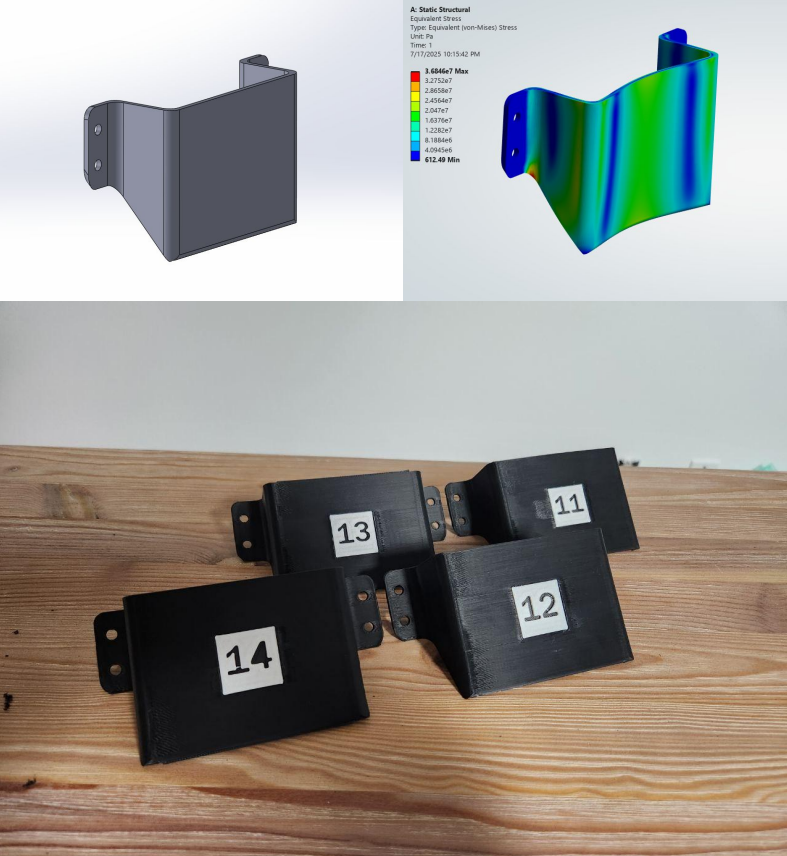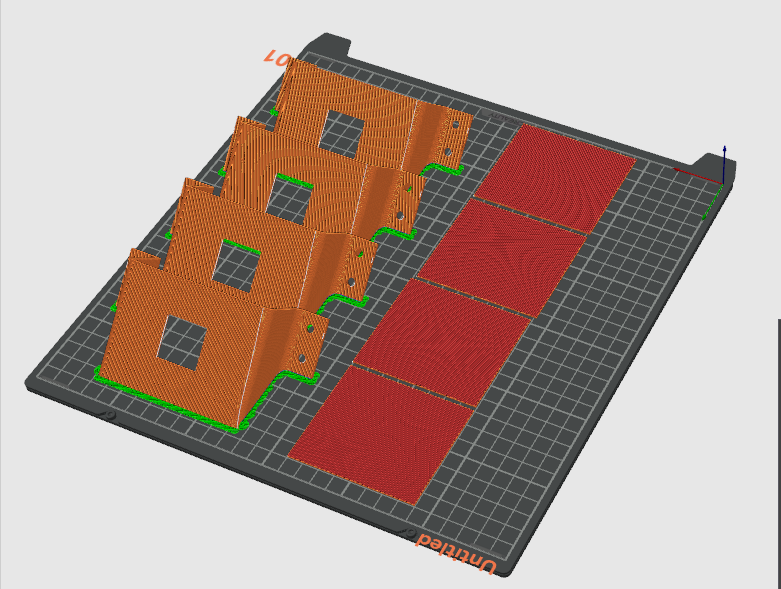Protective Mounting brackets
Project Overview: Custom 3D-Printed Protective Bracket for Gym-Installed Equipment.
A recent client reached out with a unique
challenge: how do you protect sensitive electronic instrumentation installed in a high-traffic athletic facility — specifically a gym where volleyball and basketball are played regularly?
The equipment was at risk of direct impact, and needed a cost-effective, durable, and lightweight mounting solution that wouldn’t obstruct functionality or aesthetics.
Design Objective
The primary concern was impact resistance. After research and client alignment, we determined that the bracket should be designed to withstand the equivalent of a professional volleyball spike, which exerts approximately 300 Newtons of force.
The custom bracket was modeled in CAD and evaluated through finite element analysis (FEA). Our simulation showed that the maximum equivalent stress occurred near the mounting ears, reaching approximately 3.68 × 10⁷ Pascals — slightly above the yield strength of ASA but well below its ultimate tensile strength.
Given the equipment’s compact size and its placement in a low-interaction zone, we agreed that surviving a single significant impact without structural failure was an acceptable design criterion.
Material & Structural Considerations.
We selected ASA (Acrylonitrile Styrene Acrylate) as the print material due to its UV resistance, mechanical strength, and thermal stability — making it ideal for both indoor and semi-outdoor environments.
One of the known challenges with FDM 3D printing is interlayer (Z-axis) weakness. To mitigate this, the bracket was designed with an integrated rear reinforcement channel, into which a fully-infilled flat reinforcement plate was bonded. This secondary panel, printed in the XY plane, significantly increased strength in the Z direction — where delamination is typically most likely to occur under impact.
This dual-part bonding strategy effectively converted the bracket into a composite-style assembly, distributing impact load across stronger axes and reducing failure risk.
Final Outcome
Custom-designed enclosure with impact-resilient geometry
Material- and force-tested using real-world input conditions
Optimized print orientation and hybrid reinforcement to overcome common print limitations
Clean, compact, and properly labeled for ease of installation and identification
The solution delivered mechanical confidence and peace of mind, ensuring the client’s equipment remains protected in a highly active environment.


